
Nucleosides molecules in biochemistry are the basic compounds containing a base that is nitrogenous and five carbon sugar (ribose or deoxyribose). The nitrogenous base may be adenine, guanine, cytosine, thymine (in DNA) or uracil (in RNA). These are some of the basic molecules necessary to make nucleotides, which in turn serve as monomers for all types of small and large ribonucleic acids. Learn More

An RNA primer is a short, single-stranded nucleic acid sequence composed of ribonucleotides. It serves as a starting point for DNA synthesis during processes like DNA replication and PCR (Polymerase Chain Reaction). RNA primers are essential because DNA polymerases, enzymes responsible for synthesizing new DNA strands, can only attach new nucleotides onto an existing strand of nucleotides. Learn More

Short Hairpin RNA (shRNA) is a specific type of hairpin RNA that is widely used in gene silencing techniques through the RNAi mechanism. shRNA is specifically made to degrade certain mRNA molecules and thus repress or mute the gene expression of that specific gene. The technology has in recent years been established as a powerful tool for functional genomics, therapeutic discovery and molecular biology research. Learn More

RNA binding proteins form a large and diverse class of proteins that bind to RNA molecules to control their activity. RNA binding proteins are important for RNA splicing, transport, stability, translation and other cellular processes. The RBPs specifically recognize their RNA targets based on RBP's RNA-binding domains (RBDs) that recognize defined RNA nucleotide or structural moieties. Learn More

mRNA was discovered in 1961, but it wasn't until the COVID-19 pandemic that its prominent contribution to COVID-19 vaccines garnered significant attention, driving continued interest in this therapy from investors. In 2023, the Nobel Prize in Physiology or Medicine was awarded to the two pioneers of mRNA technology, Katalin Kariko and Drew Weissman, further highlighting its significance. To address the limitations of traditional linear mRNA vaccines, technologies such as self-amplifying mRNA (saRNA/SAM) and trans-amplifying mRNA (taRNA) have emerged. Learn More

As biotechnology advances, small nucleic acid drugs are gaining attention in medical research. They're seen as a promising new approach due to their efficiency, precise targeting, and reduced side effects. They find applications in gene therapy, cancer treatment, and immune regulation. However, for their successful clinical use, thorough research and development in CMC (chemistry, manufacturing, and controls) are essential to guarantee their quality, safety, and effectiveness. Learn More

In the field of vaccine development, the emergence of mRNA-based vaccines has revolutionized traditional approaches, offering unparalleled potential in terms of safety, efficacy, and adaptability. These vaccines come with various advantages, including rapid development timelines, scalable production, and the ability to swiftly adapt to new pathogens. mRNA vaccines present an enticing pathway for combating infectious diseases, including those caused by newly emerging pathogens and drug-resistant bacteria. While mRNA vaccines hold immense promise, challenges persist, including transient antibody responses and off-target effects associated with systemic delivery. Learn More

Gene therapy and oligonucleotide drugs can alleviate or cure many diseases that traditional methods cannot cope with, especially those caused by gene defects or abnormalities. Although RNAi is considered to be more effective in treating diseases compared with other methods, there are still some challenges in delivering small interfering RNA (siRNA) to diseased sites for gene therapy. Nanoparticles have unique advantages compared with other carriers and been paid attention to for RNAi delivery. Learn More
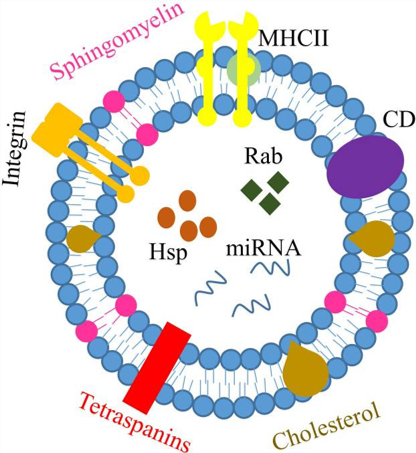
Exosome is a type of extracellular vesicle (EV) with a diameter of about 30-150 nm. They are secreted by all cell types and can be found in most body fluids, including blood, saliva, and urine. Exosomes are "nanospheres" with bilayer membranes, which contain a wide array of substances from parent cells, such as microRNAs, mRNA expression, lncRNA, DNA, lipids, peptides, and proteins (including oncoprotein, Tumor suppressor genes, transcription regulators and splicing factors). The composition of exosomes is critical because they can be used as biomarkers and provide an indication of their function in biological processes. Learn More

RNA drugs refer to RNA with the function of treating diseases, which can directly regulate the expression of the disease genes from the source, which is one of the effective means of precision medicine. RNA drugs mainly include small interfering RNA, small activated nucleic acids, mRNA drugs, ribozymes, etc. Learn More

Small interfering RNA (siRNA), sometimes called short interfering RNA or silencing RNA, is a type of double-stranded non-coding RNA molecule, usually 20-27 base pairs in length. siRNA can specifically target specific mRNA for degradation and prevent translation, thereby interfering with the expression of specific genes with complementary nucleotide sequences. siRNA can also be used to knock down non-protein-coding genes, such as long non-coding RNA (lncRNA). The use of siRNA can achieve transient silencing in a variety of cell lines, and the experiments are usually limited to a short time range of about 2-4 days. Learn More

mRNA vaccines have the advantages of rapid development, low-cost production, and safe management, and have strong potential to replace conventional vaccines. During the vaccination process, the formulation and delivery strategies of mRNA contribute to the effective expression and presentation of antigens and immune stimulation. mRNA vaccines have been delivered in many forms, including: encapsulated by delivery vectors, such as lipid nanoparticles, polymers, peptides, free mRNA in solution, and wrapped by dendritic cells in vitro. Appropriate delivery materials and formulation methods usually improve vaccine efficacy, which is also affected by the choice of an appropriate route of administration. Learn More
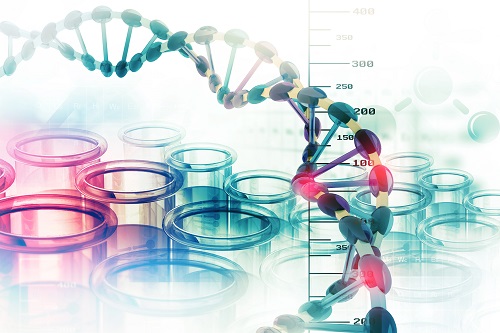
Now, small interfering RNA (siRNA) has become the method of choice for mammalian cell genetic analysis and has the potential to be used as a treatment for a variety of cancers, acquired and inherited diseases. Here, we describe four methods for generating siRNA for mammalian RNAi experiments, each of which has its advantages and disadvantages. The best way to generate siRNA depends on the purpose of the experiment. We will discuss the types of applications that suit them best. Learn More
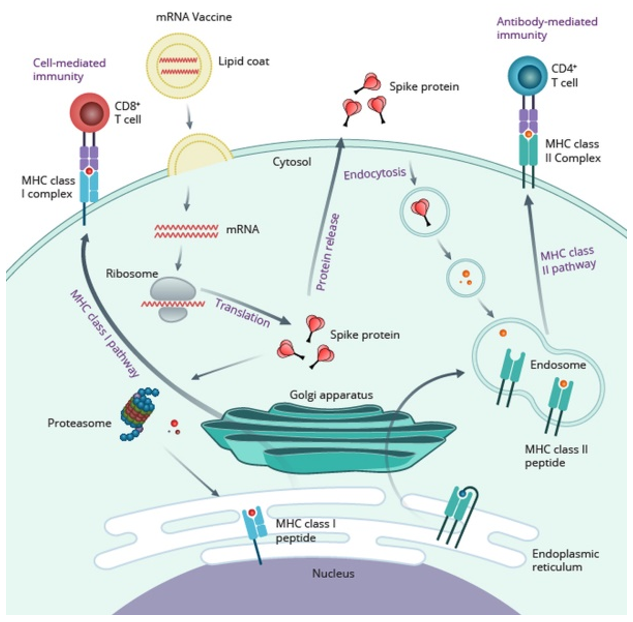
The use of mRNA as vaccines and drugs to prevent, diagnose and treat certain diseases is gradually becoming the focus of pharmaceutical companies. mRNA-based therapy, in short, is to introduce chemically modified mRNA molecules into the cytoplasm, and use the nucleotides in the cytoplasm for transcription and expression to produce the proteins needed by the body. Learn More

RNA is divided into messenger RNA (mRNA) and non-coding RNA according to its structure and function; non-coding RNA is divided into large non-coding RNA and small non-coding RNA: large non-coding RNA includes ribosomal RNA, long non-coding RNA, and non-coding RNA. Encoding small RNAs include transfer RNA, ribozymes, small molecule RNAs and so on. mRNA is a type of single-stranded ribonucleic acid that is transcribed from a strand of DNA as a template and carries genetic information that can guide protein synthesis. Learn More

Oligonucleotide-antibody conjugates (oligo-Ab) are a new class of synthetic chimeric biomolecules. After the oligonucleotide-conjugated antibody binds to its target, the protein level can be converted to the oligonucleotide level, which greatly improves the sensitivity of protein detection and allows the use of multiplexed methods. Learn More

Mature mRNAs require 5' cap structures, which are evolutionarily conserved modifications in eukaryotes and are essential for the translation of most proteins in vivo. The m7G cap structure consists of 7-methyl guanosine (m7G) triphosphate linked to the 5' end of the mRNA via a 5'-5' triphosphate bridge (m7G cap), that is the so-called cap 0 structure. Learn More

In vitro transcription (IVT) is the synthesis of RNA molecules, allowing researchers to customize the synthesis processes and introduce modifications to produce transcripts. It is worth spending some time optimizing mRNA template design, IVT, and other process parameters to simplify downstream processing and ensure a proper balance of yield and secondary structure formation. The synthetic mRNA should contain four important structural elements: 5'-cap, untranslated regions (UTRs), open reading frame (ORF), and poly (A) tail at the 3'-end, they play essential roles in mRNA stability, subcellular localization, and translational efficiency. Learn More

The stability of purified oligonucleotides depends on the nature and temperature of the storage medium. Oligonucleotides are usually shipped as lyophilized dry powders. Transportation over short periods of time does not affect the stability of dry oligonucleotides, which can remain stable at 37°C (98°F) for up to 25 weeks. Learn More

The important difference between self-replicating RNA (srRNA, also known as self-amplifying RNA) and regular mRNA is that it can use its own RNA sequence as a template for self-replication. Normally mRNAs encode proteins that need to be expressed, and ribosomes in the cell are used for translation and protein production...Learn More

Spherical nucleic acids (SNA) are nanostructures of densely packed and highly oriented arrays of linear nucleic acids in a three-dimensional spherical geometry. This new three-dimensional structure defines a new class of nucleic acids with properties that are distinctly different from similar linear (1D) chains of the same sequence. Learn More

Ribonucleic Acid(RNA) is the genetic information carrier in biological cells, certain viruses, and viroid-like organisms. It is a chain-like molecule composed of ribonucleotides linked together by phosphodiester bonds. Ribonucleotide molecules consist of phosphate, ribose, and a base. Learn More

The CRISPR-Cas system is a natural immune system in prokaryotes. Some bacteria, upon being invaded by viruses, can store a small segment of the viral genes in a region within their DNA known as CRISPR. Upon encountering the virus again, the bacteria can recognize the virus based on the stored segment...Learn More

Synthetic biology has gained considerable attention in recent years. It refers to the genetic design and modification of cells or living organisms by constructing biological functional components, devices, and systems to endow them with desired biological functions that meet human needs, and even the creation of entirely new biological systems. Learn More

Nucleic Acid Therapy is a highly promising treatment approach that holds great potential. It involves introducing a segment of nucleic acid sequence to upregulate, downregulate, or correct target genes, enabling more precise disease treatment. Nucleic acid drugs can be categorized based on their composition into two main classes: DNA drugs and RNA drugs. Learn More

Transcription is the synthesis of RNA from a DNA template, where the code in the DNA is converted into a complementary RNA code. Translation is the synthesis of a protein from an mRNA template, where the code in the mRNA is converted to the amino acid sequence in the protein. Learn More

Click chemistry is a versatile reaction that can be used to synthesize a wide range of compound conjugates. The click reaction allows for the convenient introduction of designed small molecules into oligonucleotides and imparts a variety of additional properties to the oligonucleotide, such as optical, physical, and chemical properties. Learn More

Polymerase Chain Reaction (PCR) is a technique widely used in molecular biology, diagnostics, forensics, and molecular genetics to amplify specific regions (amplicons) of a DNA sample. PCR can amplify several molecules of a precious DNA sample to produce a large amount of DNA, ranging from 50 to more than 25,000 base pairs in length. Learn More

DNA damage repair is a phenomenon that occurs when DNA molecules in biological cells recover their structure after being damaged by the action of various enzymes. The study of DNA damage repair helps to understand the mechanism of gene mutation, the causes of aging and cancer, and can also be applied to the detection of environmental carcinogens. Learn More

Gene sequencing is the only technical means to obtain nucleic acid sequence information directly, which is an important branch of molecular diagnostic technology. Although molecular hybridization and quantitative PCR technologies have been developed significantly in recent years, their identification of nucleic acids only stays on the assumption of indirect inference. Learn More

Circular RNA (circRNA) is a class of non-coding RNA molecules without a 5' terminal cap and a 3' terminal poly(A) tail, and form a ring structure by covalent bonding, which are objectively present in organisms, and are significantly different from linear RNAs. Learn More

DNA origami is a molecular self-folding technique in which long single-stranded DNA scaffolds, typically M13 phage genomic DNA, are folded into well-defined objects by hundreds of short-stranded DNA staples in a one-pot method. The intrinsic addressability of DNA origami is achieved by supplementing different parts of the long single-stranded DNA scaffold with a unique set of DNA staples. Learn More

Reverse transcriptase, also known as RNA-dependent DNA polymerase, first discovered in some RNA viruses, is an enzyme with reverse transcription activity that is capable of synthesizing DNA using single-stranded RNA as a template. Reverse transcriptase was first discovered in RNA viruses in 1970 by Howard Temin and David Baltimore. Learn More

In the field of biochemistry, the phosphodiester bond is considered to be a crucial molecular structure widely found in biological molecules such as nucleic acids, including DNA and RNA, as well as adenosine triphosphate, and is also known as the 3’,5’-phosphodiester bond. It is important to note that the phosphodiester bond is a chemical group, not a covalent or ionic bond in the usual chemical sense. Learn More

In the realm of molecular biology, the intricate dance between nucleic acids orchestrates the symphony of life. Among these, RNA emerges as a pivotal player, its multifaceted roles spanning from genetic regulation to cellular signaling. Understanding and extracting RNA with precision is paramount in unraveling the mysteries of biological processes. Learn More

For small molecule therapies, the vast majority of targets are proteins. This strategy has led to a large number of new drugs and breakthrough discoveries over the past few decades, but there are a number of problems and bottlenecks with this route. Learn More

Breast cancer ranks as the most prevalent malignant tumor globally. Standard treatment modalities encompass surgery, radiotherapy, chemotherapy, hormone therapy, and targeted therapy. Learn More

Tuberculosis is one of the major challenges facing global public health and is the world's second-largest single infectious disease cause of death, second only to COVID-19 infection.Learn More

Quality standard control is an important aspect in the manufacturing of oligonucleotides. Like the acceptance criteria for any active pharmaceutical ingredient, the quality standards for oligonucleotide raw materials are based on preclinical and clinical data, variability in production processes, and analytical control strategies. Learn More

DNA storage is an effective fusion of biotechnology (BT) and information technology (IT), representing a green revolution in data storage. DNA is a large polymer composed of deoxyribonucleotides.Learn More

miRNA is a kind of non-coding single-stranded RNA widely stored in the RNA molecule with a length of about 18-22 nucleotides, which can regulate gene expression through a variety of pathways, and plays an important role in the regulation of gene expression. Learn More

Eukaryotic RNA precursors undergo a process of splicing and ligation to form mature functional RNA molecules. RNA ligases are involved in repair, splicing, and editing pathways, which either reseal broken RNA or alter its primary structure.Learn More

With the continuous development of molecular biology and cell biology research, cell transfection has become a routine tool for studying gene function in cells. Cell transfection technology can be divided into two main categories: transient transfection and stable transfection. Learn More

The COVID-19 pandemic has accelerated the development of mRNA vaccines, and the expedited approval of multiple vaccines has propelled the innovation of mRNA nucleic acid drugs. Learn More

Currently, circRNA has emerged as a hot topic in RNA research due to its diverse biological functions, ranging from gene expression regulation to protein encoding and mRNA competition. Learn More

Extracellular RNA, abbreviated as exRNA, refers to RNA located outside of cells, including RNA in the environment as well as RNA found in the intercellular spaces or bodily fluids of multicellular organisms.Learn More

RNA methylation modification refers to the process in which methyl groups are added to nucleotides under the mediation of RNA methyltransferases. m6A, a prevalent form of RNA methylation in eukaryotes, is one of the most common types of RNA methylation modifications, characterized by the addition of a methyl group to the N6 position of adenine. Learn More

RNA ribonucleases (RNases) are nucleases that hydrolyze RNA, primarily by cleaving the phosphodiester bonds between nucleotides. RNAase molecules have stable structures, containing disulfide bonds, allowing them to maintain their activity even under conditions of high temperature or the presence of denaturing agents, without the need for divalent cations. Learn More

Restricted endonucleases or restriction nucleases are enzymes that cut DNA into fragments at specific recognition sites or nearby (referred to as restriction sites) within the molecule. Restriction endonucleases are widely distributed, with at least one type found in almost every bacterial genus and species, with some genera harboring dozens of different types. Learn More

RNA splicing is a highly regulated process, carried out by the spliceosome and other splicing regulatory factors. The spliceosome recognizes core regulatory sequences in pre-mRNA, including the 5' and 3' splice sites (5'SS and 3'SS) marking intron-exon boundaries, the branch point site (BPS), and the polypyrimidine tract. Learn More

Nearly all human cells contain the same genetic material, but the transcriptional information in each cell reflects only the unique activity of its gene set. Analyzing gene expression activity within cells is considered one of the most reliable methods for understanding cell identity, status, function, and response. Learn More

Currently, gene therapy is one of the highly regarded fields of treatment because it directly intervenes at the root cause of diseases rather than just addressing symptoms. This therapy has shown success in preclinical trials by regulating gene expression or silencing in diseased cells. Learn More

DNA polymerase is an essential enzyme involved in the processes of chromosome replication, repair, and recombination within cells, ensuring accurate replication and transmission of genetic information to daughter cells and offspring. Based on the analysis of DNA polymerase amino acid sequences and structures, it can be classified into seven major families: A, B, C, D, X, Y, and reverse transcriptase (RT) family. Learn More

Gene editing is a branch of genetic engineering, which is a breakthrough method capable of inserting, deleting, modifying, or replacing DNA in the living genome. Gene editing technology is a technique that targets specific changes in genetic material. Learn More

Gene knockout refers to the process of inactivating or disabling specific genes in the genome of an organism. Broadly speaking, gene knockout includes the complete knockout, partial knockout, deletion of gene regulatory sequences, and deletion of segmental genome sequences. Homologous recombination is currently a widely used method for gene knockout, where the knockedout gene is used to observe phenotypic changes in organisms or cells, making it an important tool for studying gene function. Learn More

Extrachromosomal DNA (ecDNA) is a type of circular DNA element present in the genome of cancer cells. Unlike the chromosomal inheritance mechanism in normal cells, ecDNA typically contains highly expressed enhancers and driver oncogenes. The circular topology of ecDNA leads to open chromatin conformation, generating novel gene regulatory interactions, including interactions with distal enhancers. Learn More

mRNA synthesized through in vitro transcription is a meticulously designed sequence to mimic the biological function of natural mRNA single-stranded transcripts in protein translation. The mRNA sequence consists of five key structural elements: the 5' cap structure (Cap), 5' untranslated region (UTR), coding sequence (CDS), 3' untranslated region (UTR), and poly(A) tail. Learn More

Currently, the mRNA drug production process is gradually maturing. The preparation and production of mRNA drugs need to consider three core issues. Learn More

The molecular cloning technique employs a vector to transfer DNA fragments (target genes) into recipient cells, serving as a self-replicating DNA molecule tool. Common vectors include plasmids, bacteriophages, viruses, etc. Learn More

Fluorescent real-time quantitative polymerase chain reaction (qPCR) technology is arguably the most important and widely used nucleic acid quantification technique in modern molecular biology. Successful qPCR experiments rely on precise experimental design and operational procedures. One of the most common issues encountered is the formation of primer dimers. Learn More

The blood-brain barrier (BBB) is a highly selective semi-permeable boundary formed by endothelial cells, which regulates the transfer of solutes and chemicals between the circulatory system and the central nervous system (CNS), thereby protecting the brain from the influence of harmful or unnecessary substances in the blood. The BBB is a natural protective membrane that prevents the CNS from being harmed by toxins and pathogens in the bloodstream. Learn More

Single Nucleotide Polymorphisms(SNPs) are variations in a single nucleotide in the genome, including transitions, transversions, deletions, and insertions, forming genetic markers with a large number and rich polymorphism. Theoretically, each SNP site can have four different variant forms, but in practice, only two occur, namely transitions and transversions, with a ratio of 2:1. SNPs occur most frequently in CG sequences, and most often involve the conversion of C to T. Learn More

Gene editing tools are sophisticated instruments utilized to modify the genetic makeup of organisms. Their primary function is to introduce precise alterations into DNA sequences, including the addition, deletion, or modification of specific genes. Learn More

Respiratory syncytial virus (RSV) belongs to the respiratory virus family and can cause respiratory infections in people of all ages throughout the year. It particularly poses a risk of severe infection and respiratory sequelae for pediatric patients, as well as for adults with immune deficiencies or underlying conditions. Learn More

RNA polymerase (RNApol or RNAP) is an enzyme that uses a single-stranded DNA or RNA template to build RNA by linking ribonucleoside triphosphates (NTPs) together with phosphodiester bonds. It's also called transcriptase because it copies genetic information from genes into RNA. Learn More

BOC RNA provides different spacer phosphoramidites and has been working closely with global partners in the field of nucleic acid chemistry to ensure efficient and accurate synthesis of DNA and RNA oligonucleotides.Learn More

DNA/RNA can co-exist with many sensitive organic functional groups. Examples of such groups include alkyl halides, benzyl halides, allyl halides, α-halo amides, esters, activated esters, carbonates, thioesters, tosylates, sulfonic esters, sultones, phosphates, α, β-unsaturated carbonyls, epoxides, aziridines, maleimides, vinyl arenes and methides. Learn More

BOC RNA provides linker phosphoramidites used for DNA/RNA synthesis. Use an amino linker to conjugate biotin, fluorescein, or other modifiers and a reporter group to the 5'end of the oligonucleotide or adheres to the surface. Learn More

Label Phosphoramidites are a class of chemical reagents used in DNA and RNA synthesis to introduce various markers or modifying components into the nucleic acid sequence. Learn More

Dye phosphoramidites are used by introducing a variety of dye molecules, which in turn exert their effects with various characteristics. We offer products such as fluorescein phosphoramidites, cyanine phosphoramidites, TAMRA phosphoramidites, JOE phosphoramidites, etc. These molecules are used in genome research, molecular diagnostics, and other fields. Learn More

With many years of experience in engineered nucleic acid production, BOC RNA has accumulated a wealth of phosphoramidite technology expertise in protection chemistry, modification, production scale-up, and innovative purification strategies. Learn More

RNAs are multifunctional biomolecules that can be broadly defined as coding RNAs and non-coding RNAs (ncRNAs). ncRNAs are of various types, including tRNAs, lncRNAs, miRNAs, small interfering RNAs (siRNAs), saRNAs, circRNAs, and exosomal RNAs, among other types. Learn More

Ribosomal RNA (rRNA) is the most abundant RNA in the cell, accounting for more than 85% of total RNA. rRNA has defined species and conserved nucleotide sequences. rRNA does not perform its function when it exists alone, but when combined with a variety of proteins to form ribosomes, it can read the genetic information contained in the tRNA nucleotide sequences and translate them into sequences of amino acids in proteins. Learn More

DNA ligase forms a phosphodiester bond between two DNA fragments. DNA ligase does not require a template because DNA ligase joins two nicks in a DNA double strand at the same time. DNA ligase is an enzyme that repairs DNA breaks by joining the 5´-phosphorylated ends of broken DNA to the 3´-OH ends, repairing breaks in the phosphate backbone of DNA. Learn More

DNA Methylation is the process by which specific bases in a DNA sequence acquire a methyl group by covalent bonding under the action of DNA methylation transferase (DNMT). DNA methylation is a form of chemical modification of DNA, which is a very conservative epigenetic modification capable of altering the activity of DNA fragments without changing the DNA sequence, thereby altering genetic expression. Learn More

A DNA vaccine is actually a ring-shaped plasmid DNA constructed from a plasmid expression vector and a target gene for the intended antigen, which is injected into human cells and expresses the antigen encoded by the target gene, thus activating the immune response of the body. From the central law of molecular biology, it is known that DNA stores genetic information in the cell nucleus, transcribes to form mRNA, which directly guides protein translation, while proteins perform their functions in life activities, and immunogenic substances that can activate the body's immune response are proteins.Learn More

Mitochondrial DNA (mtDNA) is a small circular genome present in the energy-producing organelles of eukaryotic cells. mtDNA is the only DNA outside the nucleus, and it is always inherited from the mother in the parent. mtDNA encodes some of the core proteins necessary for mitochondrial function. Learn More

DNA recombination is the process of re-covalent combination of genetic information that occurs within or between DNA molecules. It includes intra-genomic large segment DNA translocation, inter-genomic large segment DNA transfer and even genomic integration. Learn More

DNA replication is an important biological process that everyone must be familiar with. This means that DNA replication is done correctly and genetic information is shared with daughter cells during cell division. This sophisticated machine includes a series of carefully choreographed steps and many essential enzymes and proteins that, as a whole, must replicate the entire genome with maximum fidelity. Learn More

Transcriptomics is the study of the overall expression of all transcribed RNAs (mRNAs, non-coding RNAs including siRNAs, miRNAs, lincRNAs, etc.) and their regulation in living organisms. It comprehensively analyzes and identifies transcripts in cells or tissues through high-throughput sequencing technology, and quantitatively and functionally analyzes them through bioinformatics methods to reveal gene expression regulatory networks and related biological functions. Learn More

A DNA ladder, also known as a DNA molecular weight marker, is a standard reference utilized in gel electrophoresis to determine the size of DNA fragments. It consists of a mixture of DNA fragments with well-defined lengths, serving as benchmarks to estimate the sizes of unknown DNA samples. These ladders are indispensable tools in molecular biology laboratories, particularly in applications involving the analysis of polymerase chain reaction (PCR) products, restriction enzyme digests, and various other nucleic acid manipulations. Learn More

Primary microRNAs (pri-miRNAs) are the initial transcripts of miRNA genes, playing a crucial role in the regulation of gene expression in eukaryotic organisms. These long RNA molecules, typically ranging from hundreds to thousands of nucleotides, contain one or more stem-loop structures that give rise to mature miRNAs upon processing. Learn More

RNA sequencing, or RNA-seq, is a next-generation sequencing (NGS) method that allows researchers to identify and quantify RNA molecules in a biological sample. RNA-seq captures the entire transcriptome, providing insights into gene expression, alternative splicing, post-transcriptional modifications, and non-coding RNA activity. Learn More

RNA primase is an enzyme involved in synthesizing a short RNA primer during the early stages of DNA replication. This primer is complementary to the DNA template strand and serves as a substrate for DNA polymerase, which then elongates the DNA strand. Unlike DNA polymerase, which requires an existing strand to function, RNA primase can synthesize RNA de novo without a primer, making it indispensable in initiating DNA synthesis. Learn More

The Oligonucleotide Ligation Assay is a specialized technique designed to detect target nucleic acid sequences by employing two or more short, specifically designed oligonucleotides. These oligonucleotides are crafted to hybridize adjacent to the target sequence in a way that their 3' and 5' ends align perfectly for ligation. The ligation process is facilitated by a class of enzymes known as ligases, which catalyze the formation of phosphodiester bonds between nucleotides, effectively joining the oligonucleotides into a longer strand of DNA. Learn More

Gene mutation refers to a permanent alteration in the nucleotide sequence of a gene. These changes can occur in various ways, including substitutions, insertions, or deletions of nucleotides. The significance of a mutation is often determined by its effect on the gene's function, which can range from benign to pathogenic. Mutations can occur in coding regions of genes, where they may directly affect the amino acid sequence of the resulting protein, potentially altering its structure and function. For example, a missense mutation may lead to a single amino acid change that could impair protein function, while a nonsense mutation introduces a premature stop codon, truncating the protein. Learn More

RNA editing refers to the biochemical modifications made to RNA transcripts, often involving the insertion, deletion, or substitution of nucleotides. The modifications occur after RNA synthesis (transcription) but before translation, altering the information encoded in mRNA and affecting how genes are expressed. These edits can affect everything from protein-coding sequences to untranslated regions (UTRs), and they are critical for generating biological diversity, especially in complex organisms. Learn More

Polycistronic mRNA is defined as a type of messenger RNA that contains multiple coding sequences, allowing for the translation of several proteins from a single RNA molecule. This structure is particularly common in prokaryotes, where operons - clusters of genes transcribed together - are prevalent. Each coding region within a polycistronic mRNA is separated by intergenic regions, which may contain regulatory elements that can influence the expression of the adjacent genes. Learn More

DNA gyrase, a unique type of topoisomerase found exclusively in bacteria, plays a crucial role in manipulating DNA topology, which is essential for bacterial survival and replication. This enzyme has garnered significant attention in the pharmaceutical industry, particularly as a target for antibiotic development. It is an ATP-dependent enzyme that introduces negative supercoils into DNA, facilitating the proper compaction and organization of bacterial chromosomes. Learn More

A DNA microarray, often referred to as a gene chip, is a solid surface that contains a grid of microscopic spots, each representing a unique DNA sequence corresponding to a specific gene. These spots contain probes that hybridize with complementary DNA or RNA from biological samples, allowing researchers to assess gene expression levels across a multitude of genes simultaneously. DNA microarray technology has revolutionized the field of genomics by enabling simultaneous analysis of thousands of genes, facilitating extensive studies in gene expression profiling, disease diagnostics, and therapeutic developments. Learn More

DNA fingerprinting, also known as DNA profiling, has transformed the landscape of forensic science and biological identification. This revolutionary technique utilizes the unique variations in DNA sequences to differentiate individuals, providing a powerful tool for criminal investigations, paternity testing, and historical research. DNA fingerprinting is a method that analyzes specific regions in the DNA where variations occur, primarily focusing on repetitive sequences such as short tandem repeats (STRs) and variable number tandem repeats (VNTRs). Learn More

Anti-dsDNA antibodies, also called dsDNA antibodies, specifically target the double-stranded form of DNA, which is a hallmark of SLE. Their presence is often associated with disease activity and severity, particularly in relation to lupus nephritis. Anti-dsDNA antibodies exhibit several unique characteristics, including a high affinity for nucleosomal structures and a strong association with renal involvement in lupus patients. Learn More

MicroRNA (miRNA) is a small non-coding RNA molecule that plays a key role in regulating gene expression and cellular processes. Their discovery has greatly advanced our understanding of molecular biology and gene regulation. Recent studies have revealed critical functions of miRNAs in stem cell biology, especially in stem cell maintenance, differentiation and therapeutic applications. Learn More

Over the last few decades, there has been a great change in the biological role of RNA. It was previously considered as merely an intermediary between DNA and proteins, serving merely as a passive carrier of genetic information. However, the modern view of RNA extends its functions far beyond such a basic role. Learn More

Vaccines have experienced a hundred years of development, giving birth to many milestone vaccine types, from the earliest, inactivated and live attenuated vaccines as the representative of the first generation of traditional vaccine types, to the second generation of vaccines dominated by genetic engineering technology in the last century, as well as the birth of nucleic acid vaccines belonging to the third generation of vaccines in recent years. Learn More

With messenger RNA (mRNA) emerging as a transformative platform for vaccine and therapeutic research, the evolution of biopharmaceutical manufacturing has been rapid. After the success of COVID-19 mRNA vaccines, it is now also worth looking at ways to maximize mRNA production for diseases. It's the purification step that is of crucial importance to mRNA production and, therefore, directly to the efficiency, stability and efficacy of the end drug product. The TFF has been a valuable technology for mRNA purification because of its high recovery and the fact that it allows the RNA integrity to be maintained during the process. Learn More

Exosomal ncRNAs have become one of the most promising categories of biomarkers for cancer detection. Exosomes, tiny capsules released by almost all cells, carry hundreds of biomolecules, including ncRNAs, which indicate the molecular position of their progenitor cells. Exosome-borne ncRNAs have opened up novel pathways to diagnosis for cancer by providing non-invasive, highly specific and cost-effective ways to measure biomarkers in body fluids. Learn More

Circulating Tumor DNA (ctDNA) refers to small fragments of genetic material shed by tumor cells into the bloodstream. ctDNA is one of the most promising cancer tools to monitor the progression of cancer, detect only mild residual disease, and locate genetic variants for targeted treatment. The liquid biopsy market has changed drastically since the discovery of ctDNA in the 1990s with its high-sensitivity detection. Unlike the open surgery of tissue biopsy, ctDNA is detectable in blood plasma, and thus provides an excellent method to follow tumour progression in real time. Learn More

In recent years, the enthusiasm for small nucleic acid drug research and development has been high, and three heavyweight partnership deals have already been reached in 2024, with a potential total amount of more than ten billion dollars. With the continuous breakthroughs in small nucleic acid R&D technology, small nucleic acid drugs are involved in a wider and wider range of disease areas, from rare diseases to chronic diseases, such as the treatment of high blood lipids Leqvio, the treatment of hypertension Zilebesiran, etc., the milestone drug Leqvio in the first nine months of this year, sales increased by 130% year-on-year to 531 million U.S. dollars, breakthrough of the 1 billion U.S. dollars mark is within reach. Learn More

Cell-free DNA (cfDNA) refers to DNA fragments present in extracellular fluids in the human body. In physiological or pathological states – for example, during pregnancy or in tumours – the levels and molecular signature of cfDNA undergo transformations, which rank it among the markers for diagnosis and treatment. cfDNA tests are now diagnostic by definition, as cfDNA enrichment methods and newer detection techniques such as sequencing and mass spectrometry have enabled. Learn More

Non-coding RNAs (ncRNAs) are non-protein RNA molecules, but they're involved in controlling gene expression and keeping the cells running. Small nuclear RNAs (snRNAs) and small nucleolar RNAs (snoRNAs) are two types of ncRNAs that specialize in RNA processing, specifically in pre-mRNA splicing and rRNA modification. snRNAs and snoRNAs play different roles in the cell, but their structures, roles and activities are all very different. Learn More

Genetic engineering has been driven forward by genome editing technologies and, of these, CRISPR-Cas platforms are among those that have inspired the field. One of the most promising materials in these technologies is single-stranded DNA (ssDNA), which has attracted great attention because it is such a useful donor template for genome editing. More recently, it was discovered that intracellular production of ssDNA can be used to continuously engineer genomes, creating new opportunities for genetic engineering. Learn More

Oligonucleotide therapeutics have made great strides in recent years – with new drugs targeting particular diseases via RNAi and gene regulation. But the efficacy of oligonucleotide compounds depends upon their metabolism and PK. A clear understanding of these mechanisms is essential to the development of drug therapies with a greater bioavailability, specificity, and safety profile. Learn More
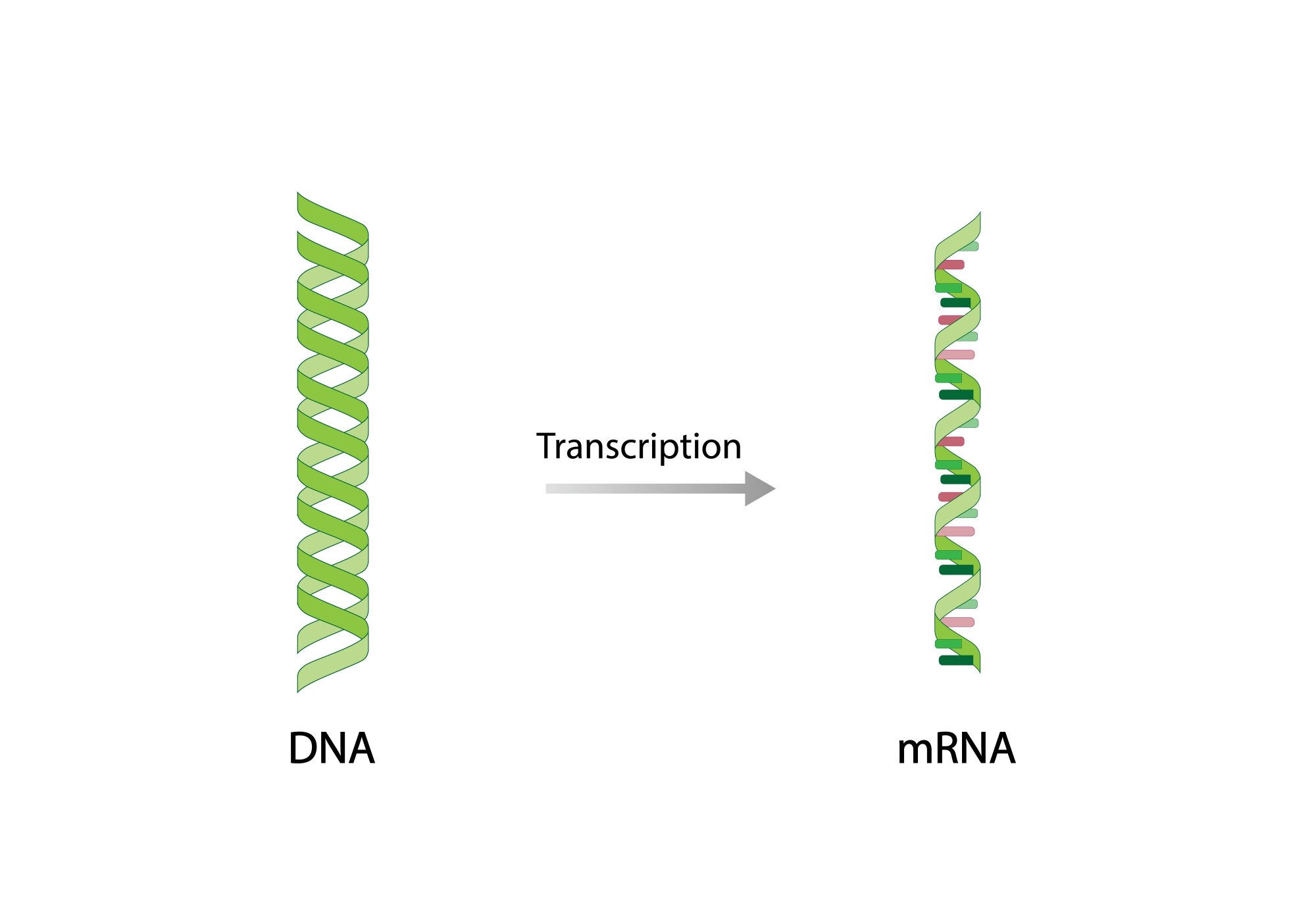
Messenger RNA (mRNA) functions as a critical molecular bridge in gene expression, facilitating the transfer of genetic instructions from nuclear DNA to cytoplasmic sites of protein production. While DNA remains stably anchored within the nucleus as the permanent genetic archive, mRNA exhibits a dynamic lifecycle—transiently existing to transport precise coding sequences to ribosomes. These cellular translation complexes then decode the nucleotide patterns into corresponding amino acid chains, ultimately constructing functional proteins. This ephemeral molecule's capacity to shuttle genetic blueprints across cellular compartments and interface with synthetic machinery underscores its essential role in converting static genomic information into biological action.Learn More
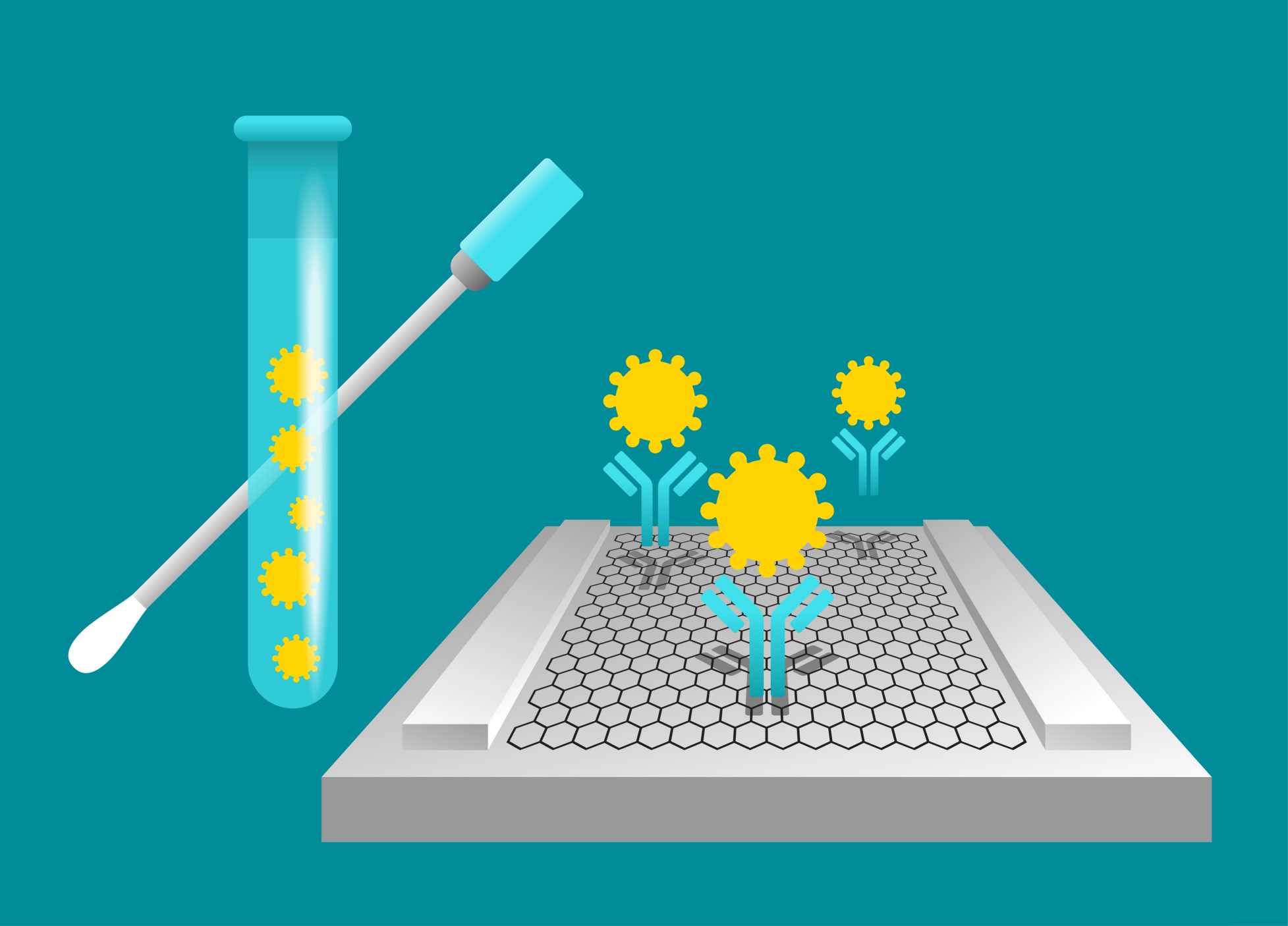
Oligonucleotides (ONs) such as antisense oligonucleotides (ASOs), small interfering RNA (siRNA) and aptamer can achieve the purpose of treating diseases by targeting pathogenic RNA or protein and inhibiting its activity, but many types of oligonucleotides have such disadvantages as poor active targeting, instability in vivo and poor transmembrane ability, so on the basis of traditional oligonucleotides, the functions and properties of nucleic acid molecules are improved by covalently coupling oligonucleotides with other functional molecules, e.g., improving cell uptake, tissue delivery, bioavailability, catalytic effect, etc., and... Learn More
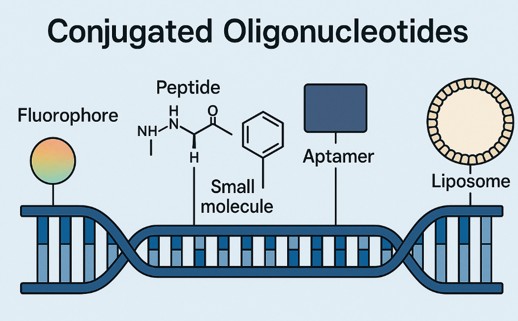
Unmodified oligonucleotides, despite their inherent specificity for target RNA or DNA sequences, suffer from poor cellular internalization due to their high molecular weight, polyanionic backbone, and hydrophilicity. Conjugation strategies have emerged as... Learn More
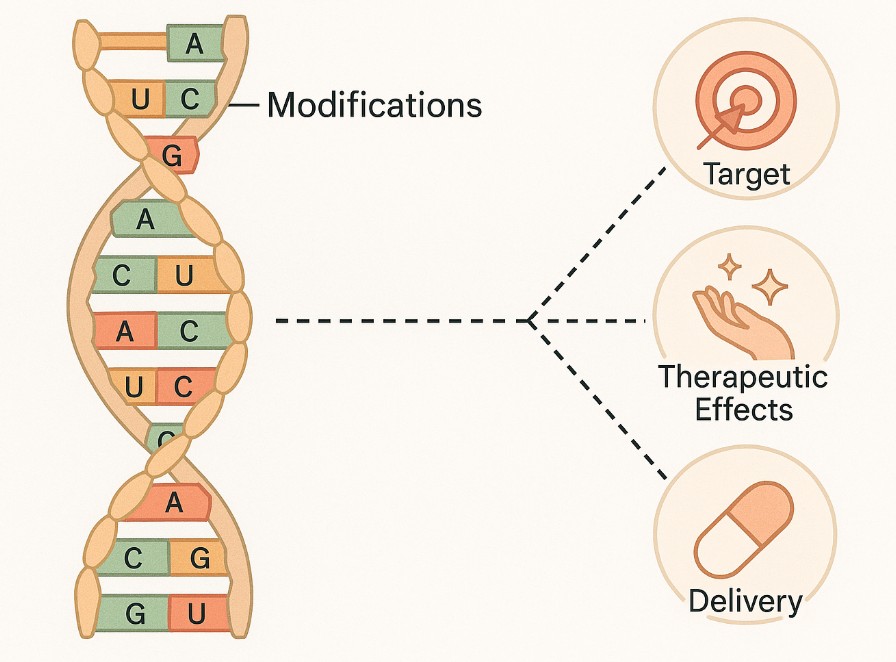
Chemical modifications at the backbone, sugar, and base levels are pivotal to transforming oligonucleotides into drug-like entities. Without such enhancements, unmodified oligos suffer from poor biological stability, rapid degradation by nucleases, and limited pharmacokinetic profiles. Learn More
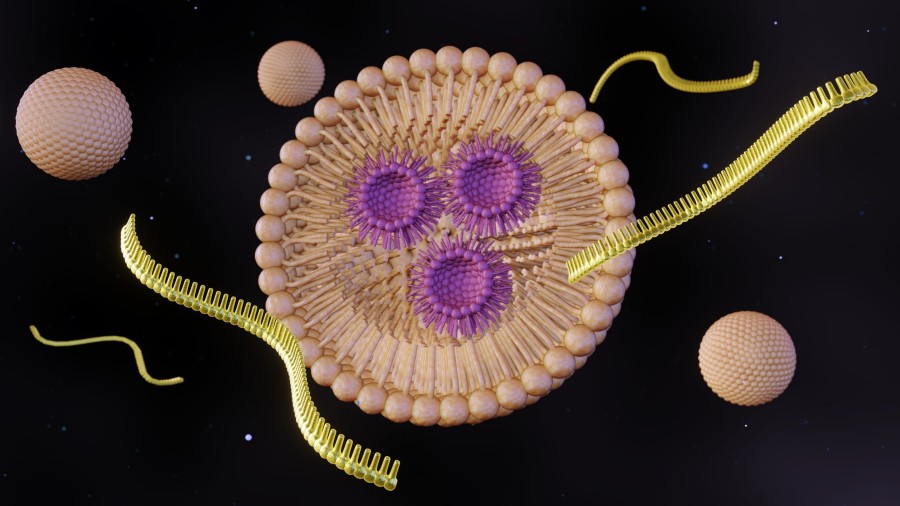
The field of RNA therapeutics has experienced explosive growth over the past decade, emerging as one of the most promising frontiers in precision medicine. With the ability to selectively regulate gene expression at the RNA level, therapies based on small interfering RNA (siRNA), microRNA (miRNA), and antisense oligonucleotides (ASOs) offer unprecedented opportunities to treat a wide array of diseases - from genetic disorders to cancers and infectious diseases. Learn More
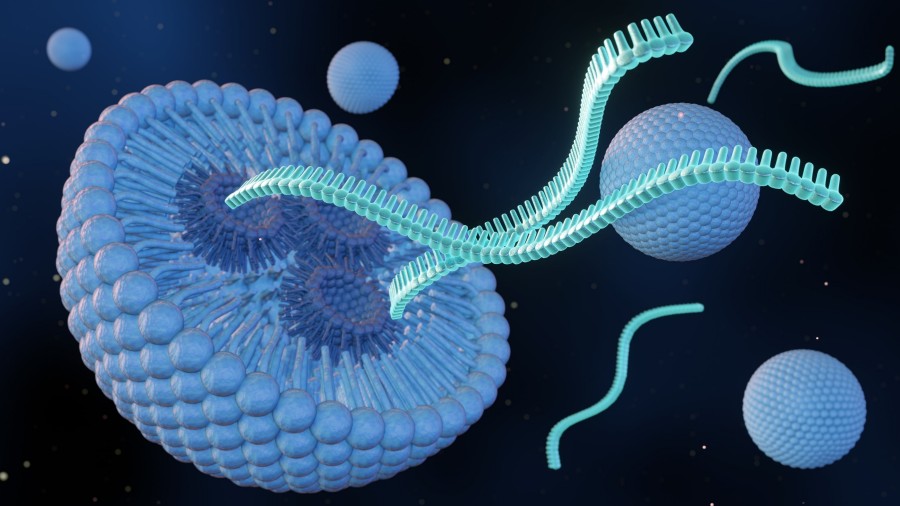
Antibody-siRNA conjugates are rapidly emerging as a next-generation solution for targeted gene silencing, combining the specificity of monoclonal antibodies with the potent regulatory capabilities of small interfering RNA (siRNA). This targeted approach overcomes many of the limitations associated with traditional siRNA delivery, such as systemic toxicity, poor cellular uptake, and lack of tissue specificity. Learn More

RNA interference (RNAi) has dramatically enhanced our capacity to selectively turn off gene expression. Among the tools available, small interfering RNAs (siRNAs) stand out as effective agents for reducing specific messenger RNA (mRNA) levels within cells, thereby advancing our understanding of gene roles and opening new therapeutic possibilities. Learn More
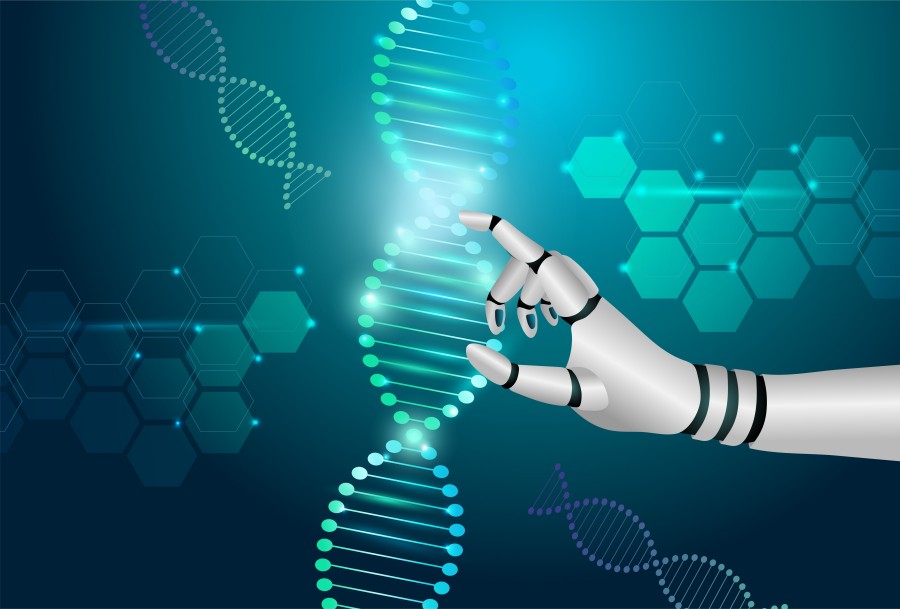
Antigen design is one of the most critical—and often one of the most challenging—steps in vaccine development. A well-designed antigen must not only mimic key structural features of a pathogen or tumor-associated protein, but also be stably expressed, properly folded, and immunogenic in the desired host system. Learn More
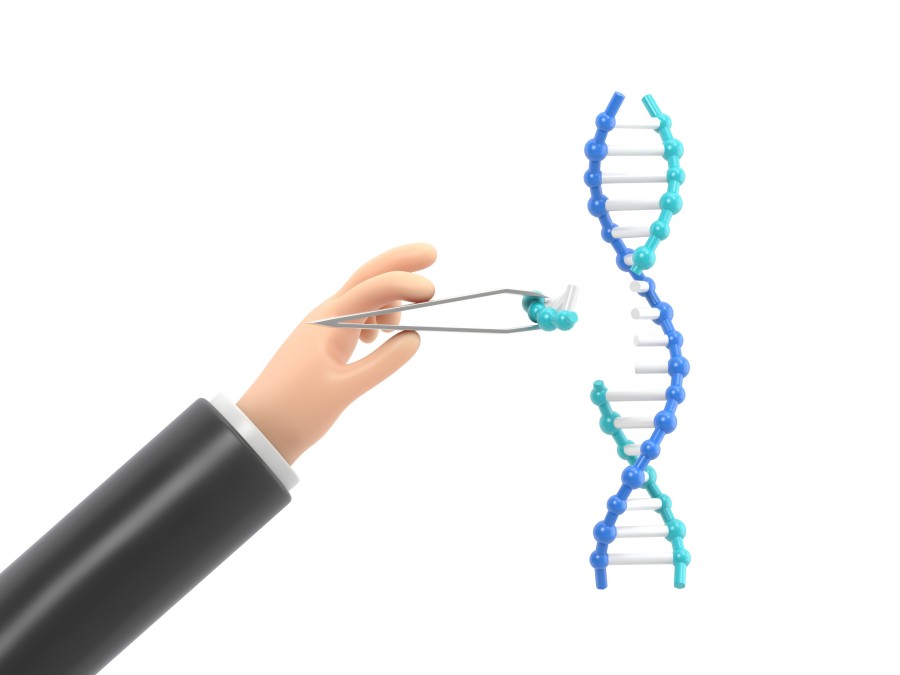
Preclinical testing is a critical stage in vaccine development, where candidate antigens are first evaluated for expression, safety, and immune response in animal models. However, traditional methods like molecular cloning and plasmid production are often too slow to meet the urgent timelines of modern vaccine programs, especially during outbreaks. Learn More

Hard-to-target cells don't just cloak themselves in a second lipid bilayer, they also reorganize their glycocalyx, fortify junctions, summon phagocytic body-guards and expel anything that "smells" foreign, long before a single siRNA phosphate can be de-protonated. The successful strategies are therefore not incrementally superior particles but platform programs that approach anatomy, immunology and PK as co-variables. By pairing chemical camouflage to ligand-mediated first contact, biopharma can now broker entry into compartments once deemed unreachable, turning cytosolic gene silencing from a hepatic oddity into a modular, organ-agnostic modality.Learn More
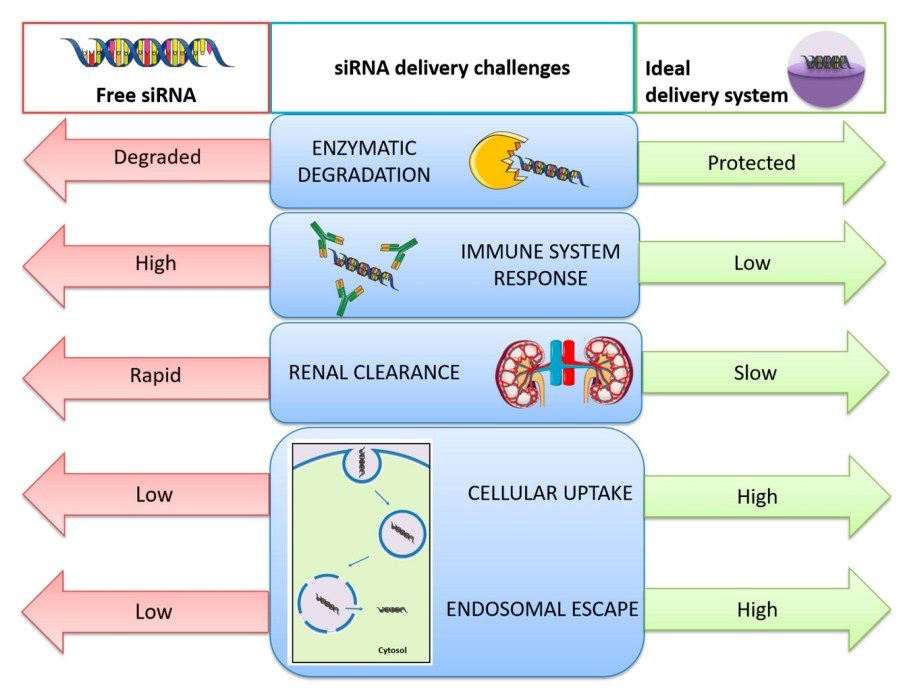
In principle, siRNA could be designed to silence any pathological transcript to a high degree of base-pair precision. In practice, the scorecard is decidedly one-sided: a handful of hepatic triumphs and a very long list of extra-hepatic failures that never even got to the patient. The problem is not one of molecular ineptitude but anatomic exclusion. Naked siRNA is filtered, degraded, opsonized and repelled long before it reaches the cytosol of the intended cell. Highly optimized nanoparticle systems reverse this process by addressing the delivery challenge as a multi-barrier negotiation rather than a single membrane to be crossed. By tuning size, charge and surface-chemistry in an iterative manner, they avoid renal extraction, cloak themselves from reticulo-endothelial sentinels, exploit vascular heterogeneity to reach target organs, and then self-destruct in response to endosomal acidity to co-locate intact duplexes next to the RISC. The remaining obstacle is to repeat this dance in every patient, every dose, without inducing neutralizing antibodies or off-target cytokine storms.Learn More
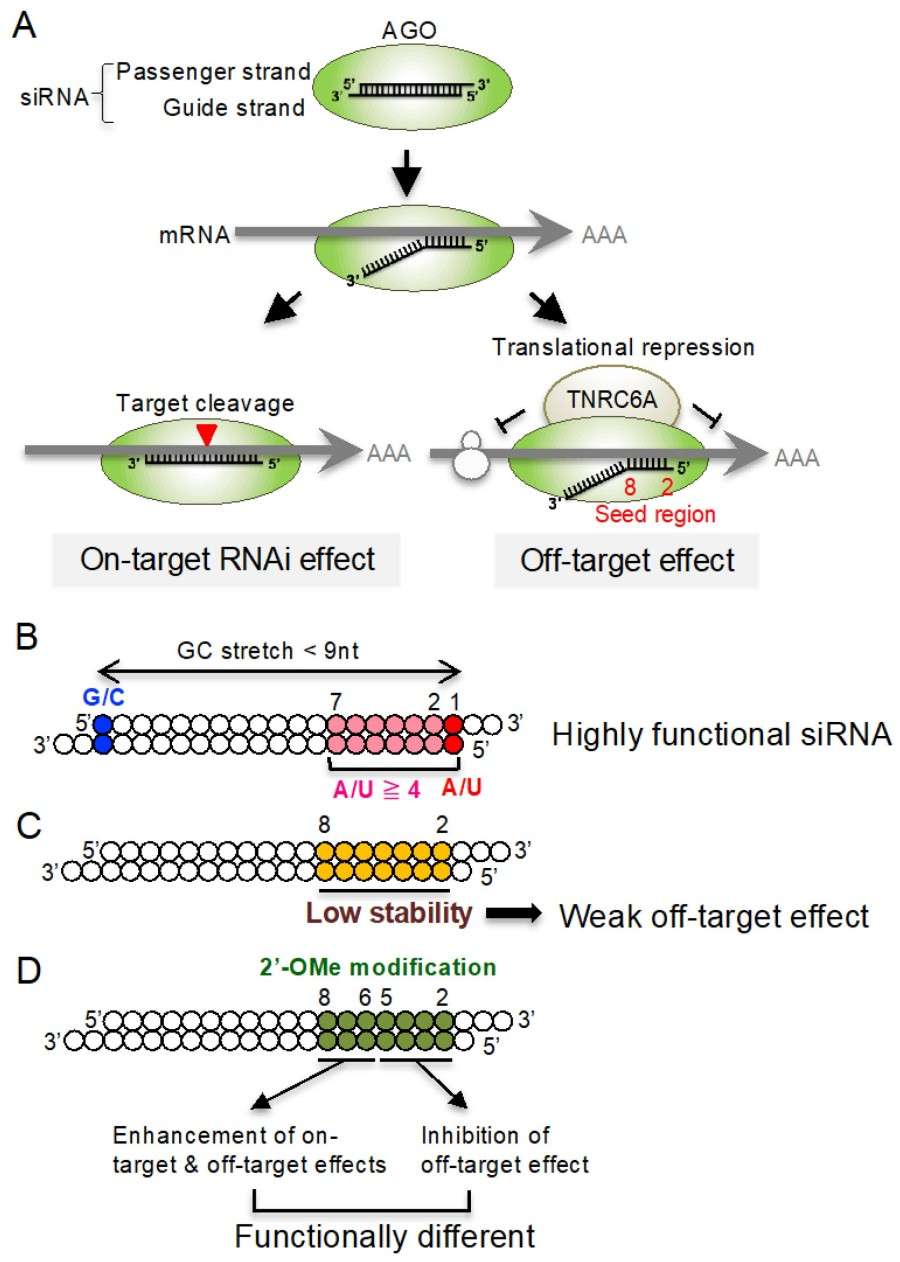
The path from serendipitous gene knock-down to robust therapeutics is paved with publications: the papers that reported on very potent silencing in vitro usually mention inconclusive toxicities in vivo, often puzzling. Off-target effects are no longer perceived as background noise, but are understood as a design flaw that is amplified by the entire RNAi machinery. High-precision solutions thus consider specificity as a systems parameter: chemical modifications reduce the likelihood of seed-region mismatches; delivery vehicles control biodistribution and restrict the access to target organs; in-silico pipelines predict – and preempt – unwanted transcript interactions long before a single duplex is synthesized. The result is a new generation of siRNA therapeutics whose safety margin is inherent to the molecule's life-cycle, rather than being bolted on late in development.Learn More
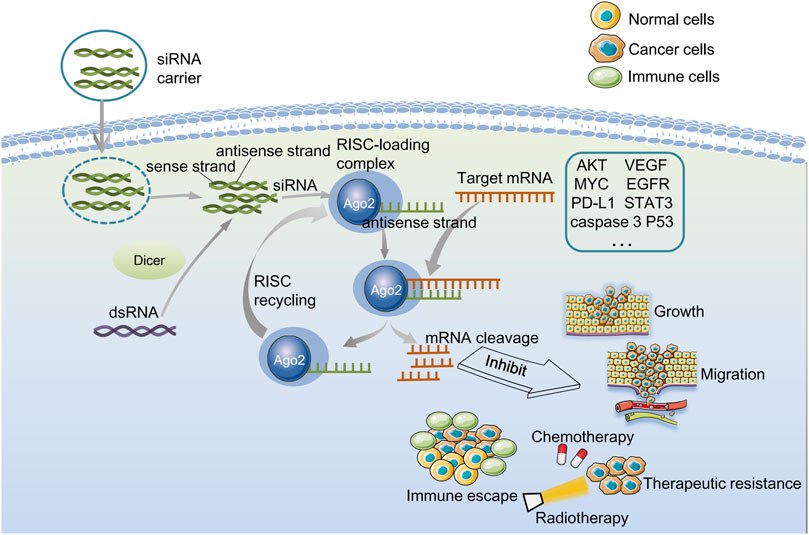
Inquiry Pharmacology of tumors has changed conceptually over the past ten years, from a practice of poisoning fast-dividing cells to an effort to delete the molecular blueprints that endow immortality. Small-interfering RNA offers a means to achieve this goal directly, but the clinical development of siRNA in oncology has been less a tale of drug discovery than a quest for drug delivery. Initial systemic injections revealed that naked siRNA is metabolized within minutes, incites an innate immune response, and preferentially accumulates in the renal cortex rather than in the tumor stroma. The field has consequently re-directed its intellectual resources towards carrier designs—lipid nano-emulsions whose surface charge reverses at pH 6.5, polymeric vesicles that divest themselves of polyethylene glycol after extravasation, and exosome-mimetic vesicles whose CD47 ligands send a "do-not-eat" message to macrophages. These systems do not merely shield the duplex; they re-engineer its biodistribution, navigating it across endothelial fenestrations that only open around tumor masses and releasing it in response to redox potentials that are higher within the malignant cytosol. The fusion of such stimuli-responsive release with transcriptome-wide specificity algorithms has yielded a therapeutic index for siRNA that is comparable to that of small-molecule kinase inhibitors, breaching solid tumors that were previously deemed inaccessible to nucleic-acid therapeutics.Learn More

Two decades of siRNA carrier optimization later, most of the flashy performers in vitro still buckle up when faced with the anatomical, biochemical and regulatory complexity of intact organisms. Attrition is not stochastic; the loss of potency follows a reproducible failure cascade that starts in the petri dish and funnels through scale-up suites, animal facilities and, ultimately, clinical wards. Early discovery is based on transformed cell lines with hyper-permeable membranes, serum-free media that protect naked RNA from nucleases and reporter assays that turn sub-therapeutic knock-down into a photonastic signal. This string of permissive bottlenecks masks the fragility of many formulations such that the same particles, once exposed to whole blood, interstitial pressure or macrophage surveillance, become devoid of potency. Identifying this predictable attrition as a systems problem rather than a single technical bug has re-oriented the field toward an iterative validation pipeline that integrates physicochemical stress tests, immune-competent animals and manufacturability gates before a sequence is even declared lead-worthy. The two sections below focus on the two most lethal translational chokepoints, namely model-induced false positives and scale invariant production pitfalls, and highlight emerging solutions that bring lab elegance closer to clinical pragmatism.Learn More